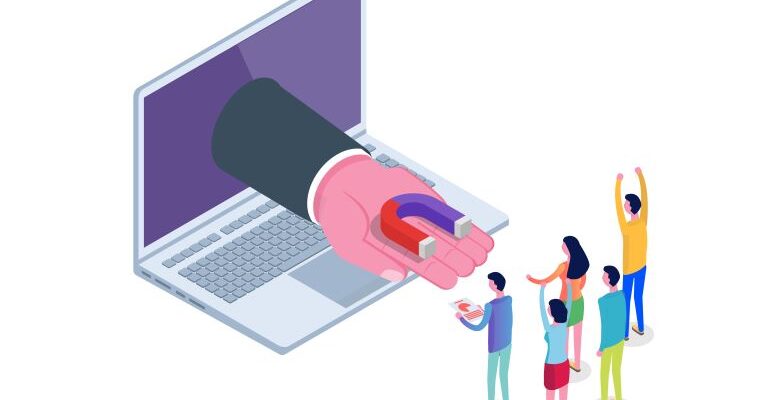All companies and brands rely on their ability to sell products, services, ratings, reputation, rankings, authority, etc. And so, all businesses share the same obstacle – having to build a healthy sales pipeline. However, the challenge here is that such an accomplishment requires detailed research, thorough planning, and most importantly – the right software solution. That is where the implementation of a CRM solution comes into play. For service-oriented businesses such as moving companies, having a centralized database with a user-friendly dashboard can make things easier. Not only does it save time and energy for your business, but it also saves resources while helping your company build a strong sales funnel in the process. In this article, MoversTech explores the importance of establishing a healthy sales pipeline and how to achieve it.
What’s a sales pipeline and why do you need a healthy one?
- Simply put, a sales pipeline is an organized system that helps a business track potential customers as they go through the buying process.
It is a simple and structured way for a company to track all leads, make systematic sales, predict conversion rates and revenue, build and customize marketing strategies, etc. And that is why it is so important for your sales pipeline to lay down a strong foundation on which you will be able to develop your moving business.
6-step strategy to help you build a healthy sales pipeline

Step #1: Establish a strong base with the three Ps
Building a healthy sales pipeline requires a foundation on which you can build on. And there are three essential pillars on which you can lean on for that foundation:
- Product. You can’t hope to sell a product or service if you don’t really understand every aspect of what you’re selling. That is why you need to acquaint yourself with the product. The more you explore and know about it, the easier it will be to promote it and interact with potential customers.
- Person. Once you understand what it is that you are selling, the next step is to learn who it is that you are selling to. The best sales agents are those that have a clear understanding of their target audience. By being able to differentiate between the different profiles of customers and their behavior when buying products, you will be able to push all the right buttons when talking to them.
- Pitch. Finally, you’ll need a good approach to your sales presentation. The delivery is half the battle, and behind every successful sale, you will find an engaging pitch. When you have knowledge about the product and the customers, you only need the right story to connect the two.
Step #2: Define the structure of your sales pipeline
Having a defined stage-by-stage sales process can make it much more effective. Although there are countless companies that will take the first opportunity to spam fresh leads with sales pitches, it’s not always the best approach. Establishing and maintaining a sales process is much like starting any relationship – it requires a slow and steady approach. You need to have a structured plan for engaging with potential customers, gaining their interest, and slowly leading them into converting.
Step #3: Segment your leads
There are plenty of different ways to categorize a target audience, which can prove very useful when it comes digital marketing strategies. But the classification of your potential customers can also make your sales process easier. More often than not, taking a unique sales approach to a unique group of people can prove to be more profitable than using the same pitch on all leads. Start by looking into the following segmentation groups for your audiences:
- Demographics. (age, gender, ethnicity, income size, education, etc.)
- Behavior. (brand loyalty, purchase frequency, the different channels they use to buy, etc.)
- Psychographic. (interests, attitudes, values, beliefs, lifestyle, personality traits, etc.)
- Geographic. (areas where the customer live, areas where they tend to buy from, etc.)
Step #4: Improve the quality of your leads
Having a high volume of low-quality leads is basically the equivalent of having several high-quality leads in total. if you want to build a healthy sales pipeline, you need to make sure that the leads you generate are strong and reliable ones. The best way to do that is by recognizing behavior patterns. You can then use these patterns to establish metrics to help you determine the chances you have of converting certain types of leads based on their level of interest. Consider some of the following triggers:
- Visiting your website.
- Reading an informative article on your blog.
- Watching a video about your product to the end.
- Requesting a demo.
- Completing a trial period.
These are all behavioral triggers that can help you determine the level if interest a lead has in your product or services. And these are all patterns that you can use to help you determine which trigger converts the most leads. Once you do, you can refocus your marketing campaigns to encourage this group of leads with the use of:
- Follow-up customer retention emails
- Direct contact via phone or chat
- Offering incentives for signing up for demos
- Rewards for completing trial programs
- Introducing membership programs with added benefits, etc.
Step #5: Refine your sales process.
Once you segment audiences and define triggers in customer behavior, the time comes to tailor your sales process to those specific needs. And this can usually lead you through three phases:
Evaluate the current state of your sales pipeline
Reevaluate your current sales data by gathering relevant data from your CRM system. Check which marketing channels offer the best leads and write off those that you have no use for. Consider the time frame of your sales process – ask yourself how long it takes to close a single sale and how you might be able to reduce that time frame. Take into consideration the number of interactions you need before a lead decides to make a purchase. The question is whether or not you have the right target audience despite all your sales efforts. And finally, consider which part of your sales process is underperforming.
Once you find an answer to all this, you can start making plans on how best to use that knowledge to improve your sales process.
Examine your most successful deals and the steps that led to them
Looking back can provide us with a lot of answers, especially when sales start dropping. By retracing your steps to your most successful deals, you can identify patterns that are missing in your current sales pitches. And this can lead you to creating a healthy sales pipeline for your moving business once again.
Introduce innovative solutions to your sales pipeline
A time will come when you will be able to establish a steady conversion rate. But why stop there? Just like CRM can accelerate moving business growth, so can a sales pipeline introduce new ideas to expand the reach of your brand and offer. Consider boosting the price of your products or services by introducing additional features or adding value through content, courses, webinars, etc.
Step #6: Use your CRM to retarget lost leads
Sometimes, customers can be reluctant or too stubborn to make the buying decision. And it is the job of a healthy sales pipeline to change the minds of those dead leads by giving them incentives. After all, why waste a perfectly good lead when you can use the information from your CRM software to come up with a retargeting strategy. And if you’re not quite sure how to accomplish that, here are two simple ways to get started:
Introduce and promote new features
You can start by gathering the background data from your CRM logs. Consider during which part of the sales process did the leads walk out. And then, come up with a list of potential reasons why that happened. Once you get that, it will be much easier to upgrade your products with a suitable feature that might just end up peaking the interests of those lost leads. After that, it’s only a matter of reaching out to lost leads and moving past the step where you originally lost them.
Customize your content to the needs of your customers
Oftentimes, a little persuasion wrapped up in quality content can take your sales process in a very positive direction. By introducing something that customers might be interested in in addition to your product, you can potentially sway them in favor of converting. Start by creating a value-packed piece of content like a report, webinar, video, or case study. Then, use content to personalize your outreach program and speak directly to those leads that abandoned your website in the first place. Once you get a response from them, do your best to use the intel you have to win them over and return them to the buying path.
Start making all this happen with your tailored CRM software

As you might have concluded by now, building a healthy sales pipeline is a real endeavor. It requires a strategic approach that can be time-consuming and overwhelming. However, this is where owning a CRM to guide and manage customer interactions can really come through for your business. Get the optimal CRM solution for your business today with the resources, tools, and support of MoversTech. Contact us now for a free demo!
Stay Informed
Subscribe for industry
news & updates
"*" indicates required fields

